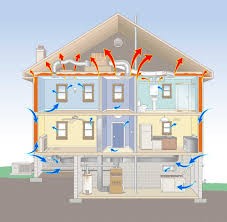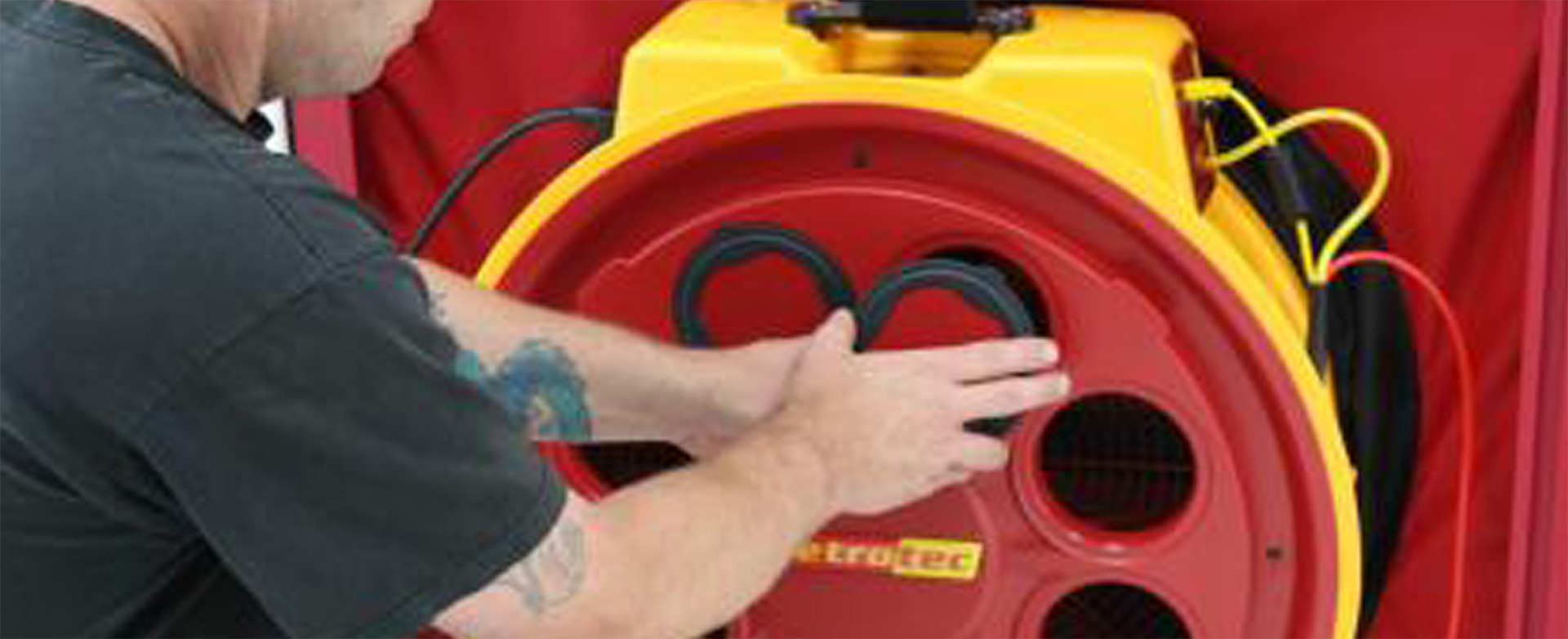United States Home Energy Performance Averages
 When it comes to home energy performance, comfort, durability and health, the United States falls short in the ranks compared to other developed countries. This is based on the 35 years of experience that Colin Genge has in testing houses from coast to coast and from selling diagnostic tools to over 10,000 technicians who have tested millions more.
When it comes to home energy performance, comfort, durability and health, the United States falls short in the ranks compared to other developed countries. This is based on the 35 years of experience that Colin Genge has in testing houses from coast to coast and from selling diagnostic tools to over 10,000 technicians who have tested millions more.
Duct leakage in existing homes can range from 12% to 35%.
Most American houses have poor quality flex duct running outside of the envelope into attics and/or crawlspaces and typically leak an average of about 20%. Some as high as 50%! Code for new houses allows roughly 12% leakage but most houses are not properly tested if they are tested at all. See The Compliance Project for details. These figures are also reflected in past DOE studies of homes built across the US. Older homes are generally much worse especially when duct tape and flex fail over time.
Insulation losses in ducts range from 10% to 30%.
The largest temperature difference in a house typically occurs between the inside of a duct and surrounding space outside of it, especially if ducts are located outside of the conditioned space. Many ducts in existing homes are insulated to about R-5, much less than walls or attics. In many cases, ducts are not properly insulated at connections where the flex meets a trunk line, junction box, boot, or return box. In addition to energy consumption and comfort issues, poor insulation around ducts can also cause moisture to condense on the outside of the duct which can lead to mold growth and compromise the integrity of the structure.
House leakage can account for approximately 15% of the heating and cooling load, if not more.
When it comes to air leaks in a house, some of the largest problems occur at the ceiling through penetrations such as HVAC chases, plumbing, light fixtures, and HVAC grilles. Cracks between top plates and drywall are also a large source for leaks. Owens Corning conducted a study to show areas in a house that can be sealed to provide the most bang for your buck where some of the most significant are located in the ceiling. This is mainly due to the natural stack effect that exists in the home. Dense, colder air falls which forces warmer, buoyant air up causing infiltration at the bottom of the house and exfiltration through the top. This occurs even when no fans are running inside, and no wind blowing outside. In some cases, having more holes at the top means more air will be pulled in from the bottom. This means penetrations at or near the floor or foundation should be also be sealed. For some holes in the envelope, the insulation appears to cover them up but only slows the losses slightly. This is bad news for all types of climates with a higher level of humidity in the air. Moisture carried by leaking air will condense on colder surfaces that are not properly insulated and start rot or mold. Overall, people worry about windows and doors because that is where they feel drafts, but they are seldom over 10% of the problem. The attic leaks mentioned can be 30% of the issue and a lot cheaper to seal.
All other measures typically contribute less than 10% of the energy issue.
Some behavioral measures such as setting back thermostats can save between 1% to 5%. There are lots of Internet thermostats for less than $100 that allow you to monitor your house while away from home and turn up the HVAC system before you arrive.
Insulating the tank on the water heater can also save between 1% to 5%.
Adding more insulation to the ceiling can save 1% to 5% if the house is already insulated. For old homes with little or no insulation, the savings would be much larger.
High efficiency furnaces, heat pumps and air conditioners do not work well with high duct leakage and poor duct insulation. An ACCA Manual J load calculation should be completed before a new system is designed and installed. Never allow a contractor to install a larger unit because they think it will perform better than the existing unit. This could result in short cycling and reduce the lifespan of the system. Short cycling refers to the unit starting and stopping frequently as the desired temperature is reached too fast. This is especially bad in more humid climates. The system needs a longer time to run so that it can dehumidify the house. Additionally, the ducts are likely to be undersized if a larger system is installed.
LED lights provide reasonable savings especially now that prices have dropped. Its best to look for ENERGY STAR certified bulbs as they go through more rigorous testing to ensure that higher standards are met for quality and longevity. ENERGY STAR appliances will also save some compared to those without the ENERGY STAR label. Window shades or blinds are a big help in home performance in hot climates, especially if there isn’t surrounding shade.
In addition to the economic benefits, health is probably the most overlooked benefit of air sealing both ducts and the building envelope. Leaking ducts can backdraft your water heater, furnace and fireplace putting nitrous oxides (like those from car exhaust) into your home. They can also cause moisture issues that can lead to mold problems that will affect allergy and asthma sufferers. Vented crawlspaces are also an environment where mold is often found. If there are a lot of holes between the house and the crawlspace, mold spores can easily be transported into the home through air infiltration. Leaky walls adjoining garages can also bring harmful substances into the home such as car exhaust and fumes from chemicals and fuels.
When it comes to the cost of adding high performance measures to a house, it is much cheaper to do things right the first time. It is cheaper and easier to air seal the envelope and ducts and install and properly sized HVAC and ventilation system when the home is being built rather than having to come back and fix problems after everything is finished and the occupants have moved in. Hopefully building codes along with enforcement will continue to take this into account as the building industry continues to grow and evolve.




